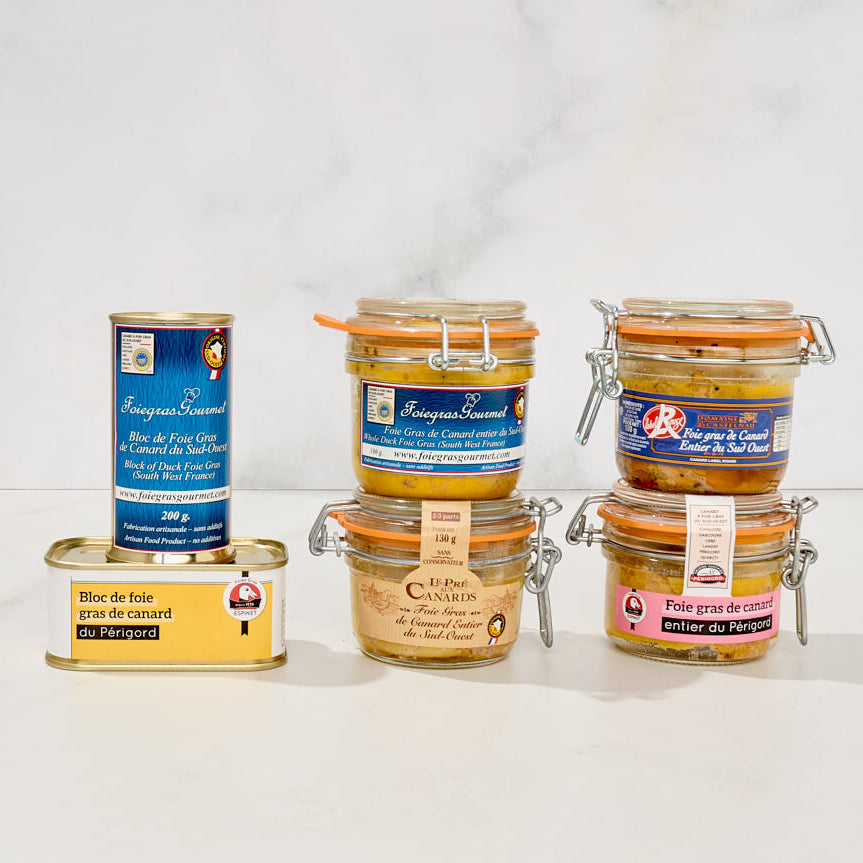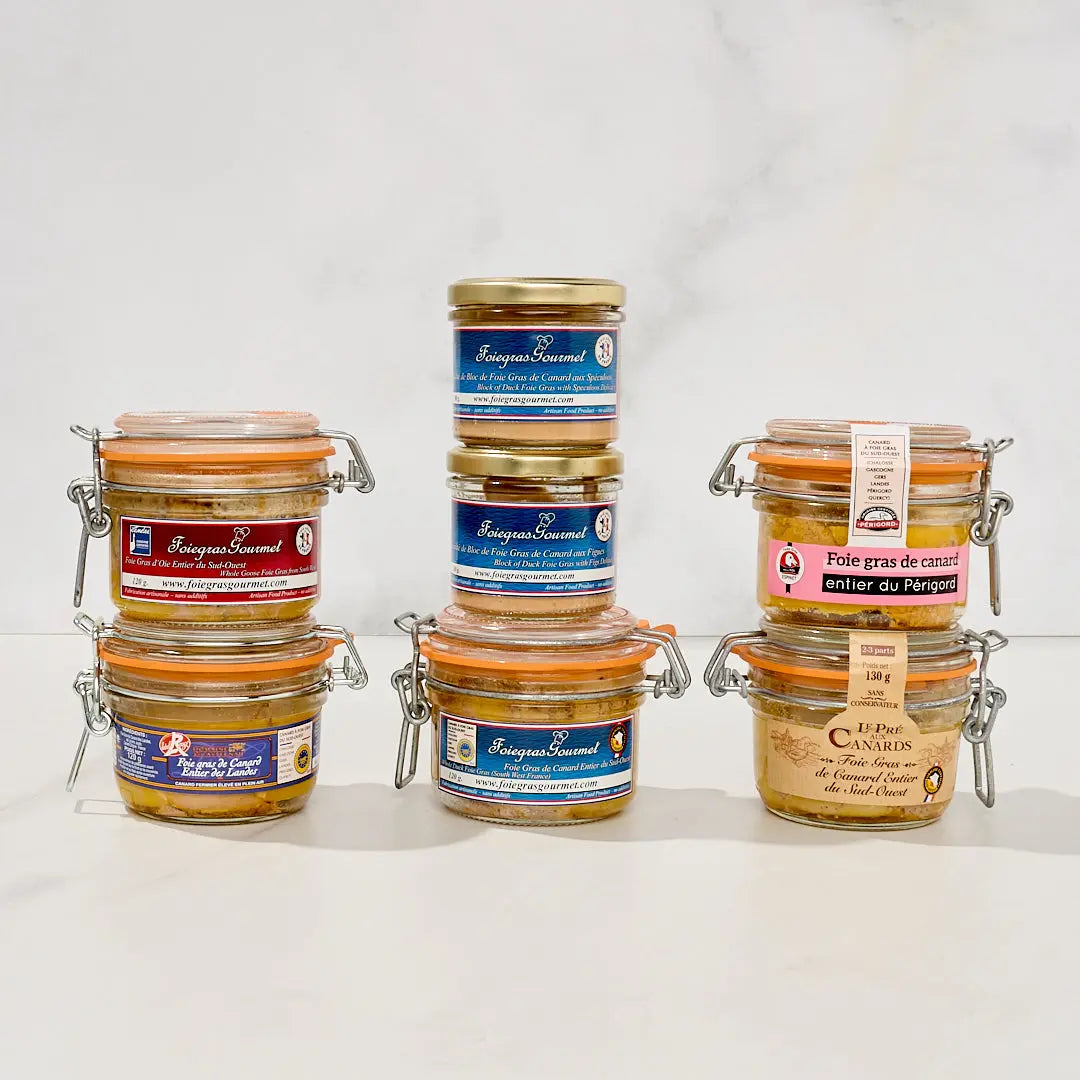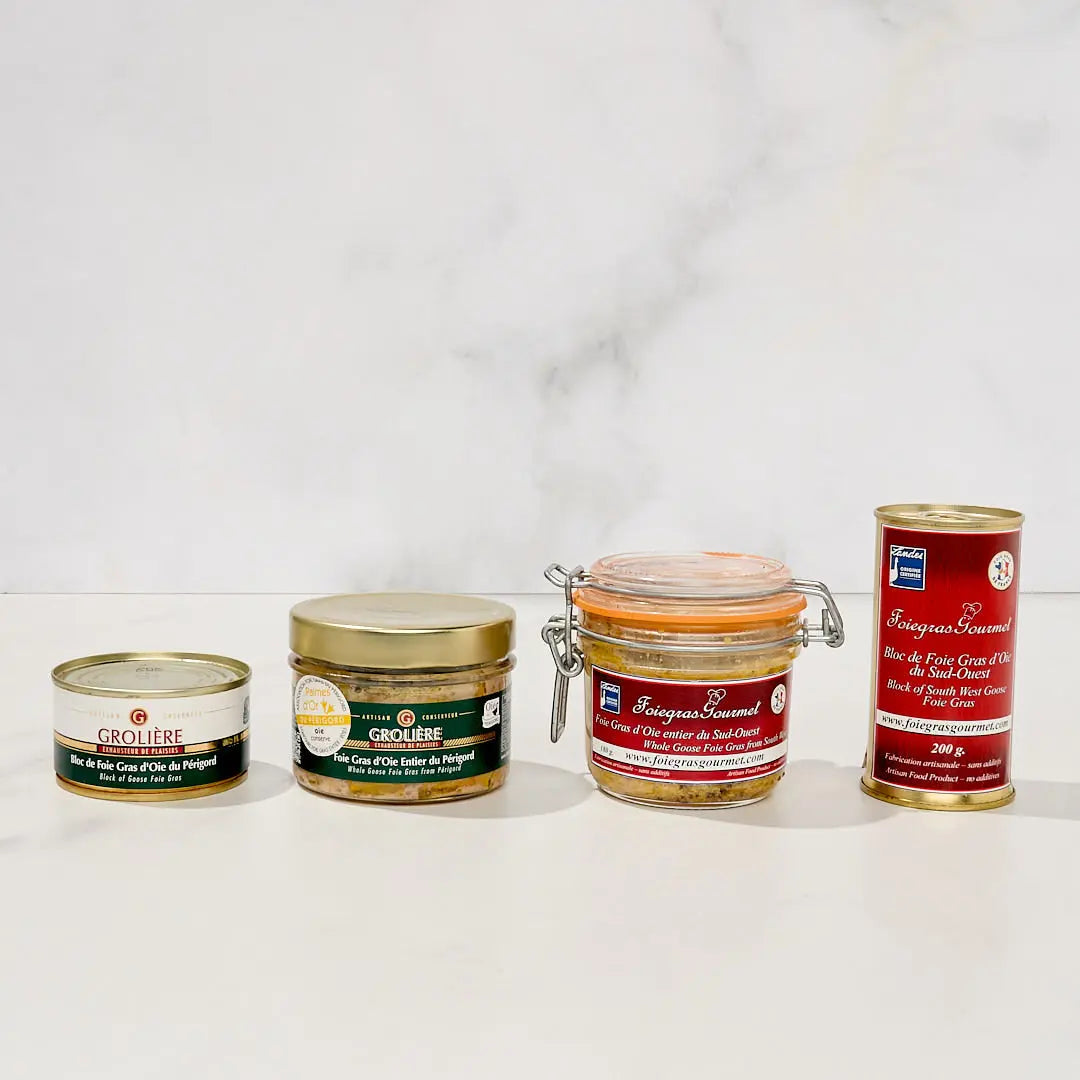How much should I pay for foie gras?
Determining the price of foie gras is no simple matter. It is easy to get lost in the different types of foie gras, in a market where the most attractive product labels rarely correspond with the best quality foie gras. This article is designed to update your knowledge of foie gras. Here are a few principles to guide you.

Determine first the type of foie gras you are looking for.
Fresh foie gras is reserved for restaurant owners and experienced cooks who make foie gras escalopes in a skillet or create foie gras terrines. Canned foies gras are favored by gourmets who want to enjoy a meal without necessarily spending a lot of time in the kitchen.
Foie gras, when sterilized by cooking at a high temperature, can be conserved for several years at room temperature and can be classified in 3 main categories:
- whole foie gras, made from a whole goose or duck liver, and which is usually eaten in a salad or on bread (A glass of excellent wine, a fig jam or, for the more fortunate, a few shavings of truffles very often accompany finest whole foie gras)
- blocks of foie gras, which are simply several pieces of foie gras worked together with a little water (10% maximum) in order to obtain an emulsion with a beautifully smooth texture. Block foie gras is ideal served on toast as a canapé.
- Foie gras pâtés, mousses, containing foie gras in varying quantities mixed with duck, goose or pork meat

There are some clear factors which affect the price of foie gras:
-a whole foie gras will cost more than a block of foie gras
-Goose foie gras is more expensive than duck since production costs are higher.
-Foie gras without a specific country of origin should be less expensive than foie gras from France which, in turn, will be less expensive than PGI or Label Rouge foie gras.
-In France, a foie gras which has been mass produced by a large industrial company and is sold in a hypermarket will often cost less than an artisanal foie gras found in markets and luxury grocery stores. The exception to this rule is the Southwest of France where it is often possible to buy very good quality foie gras at an affordable price.
Determining the origin of foie gras
A foie gras for which you cannot determine the origin, despite the product bearing a tempting label should cost less than a genuine French foie gras, or a PGI or Label Rouge product.
The origin of a foie gras is very important since the breeding methods and the quality of the food differ significantly from one region or country to another.
At Foie Gras Gourmet, we have chosen to work only with producers of foie gras in southwestern France who adhere strictly to the specifications IGP or Label Rouge. These producers have been selected both for the quality of their foie gras and the fact that they respect a traditional production process which excludes the addition of any artificial flavors, coloring or preservatives.
While these labels apply only to the production of duck foie gras, our goose foie gras also comes from birds raised in the Périgord or Landes regions. This is very rare since due to high costs of production, geese are most often raised in Central European countries with the goose livers being imported to France where they are canned.
In the South West of France there is healthy competition between producers to seek to create the best foie gras and vie for the retention of loyalty from demanding tourists who return each year in ever greater numbers, as foie gras connoisseurs.

Foie gras is generally cheaper in supermarkets
Outside South-West France, the cheaper foie gras is almost always to be found in the hypermarkets and, occasionally, in smaller grocery outlets or butcher shops when rarer foie gras has been reduced to clear for a short period following the end of year holidays.
Historically, the high costs of marketing and logistics have prevented the smaller, family producers from accessing those markets outside their local region and it is this gap that Foie Gras Gourmet has sought to bridge.
It goes without saying that any products available at tourist stores, such as those located in airports will have an inflated price tag, but beware also some luxury grocery stores abroad (Harrod's in London, Ginza Mitsukoshi in Tokyo for example) where you may find mass-produced foie gras at astronomical prices.
Foie gras price
In conclusion, geese and ducks which are raised outdoors and fed on locally-produced cereals by qualified personnel who ensure the welfare of them, produce the best quality livers.
Preparation of the liver, separating the lobes in order to de-vein it requires precision which can only be achieved using properly trained and qualified staff.
There are as many recipes as there are varieties of foie gras, which is an expensive product on average. Quality foie gras clearly comes at a price, animal rights activists are absolutely right and birds deserve to be raised, fattened and slaughtered in keeping animals in conditions appropriate to their species with healthy foodstuffs. Farmers should also make a decent living from their work.
So, whether you’re eating out or treating yourself at home, remember it is these artisanal delicacies from the southwest of France that will make a meal truly amazing!












Leave a comment